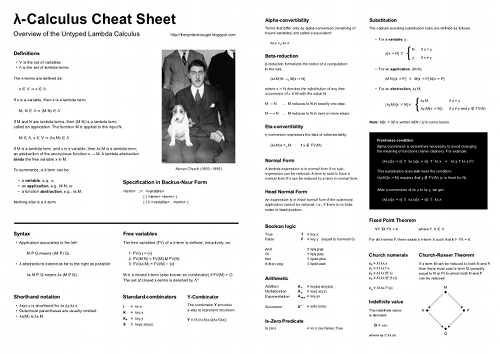
This environment contains a mapping from user-defined symbols/variables to their definitions in terms of the constructs of the language. Our interpreter is parameterised with an environment argument. The meaning of these symbols is application-dependent. Instead, we define the meaning of the basic constructs in our language and allow these constructs to contain symbols/variables.

This interpreter defines a (small-step) operational semantics for our language.Īnother important step is that we don't try and define the complete meaning of every possible term in the language. The semantics will be given by our interpreter, which evaluates a term one step at a time, in a straight-forward manner. We will define the syntax of our language shortly. Semantics describes what those sentences are supposed to mean.Ī third part is defining pragmatics, which refers to details of how such a language should be processed (e.g., what effects should be caused when interpreting something like Tcl's ).Syntax describes the valid sentences of the language and how they can be constructed.Thus, there are always two parts to defining a language: The meaning comes from the interpretation of the sentence. A sentence in a language doesn't have implicit meaning on its own. Writing an interpreter reveals a lot about how (computer) languages are given meaning. You can actually encode integers using just lambda abstractions (via Church numerals) and basic arithmetic, but the encoding is very inefficient and a bit clumsy to use. We will also add primitive support for integers and arithmetic into our interpreter. We will omit the details of how evaluation takes place (Beta-reduction and Alpha-conversion), and instead use a slightly different evaluation strategy that works for what we want. Variables in the body of a lambda term are replaced by the argument to that lambda. Application supplies an argument to a lambda abstraction. The original lambda calculus consists of just three syntactic constructs:Ībstraction creates a lambda, which denotes a single-parameter anonymous function (similar to a proc with no name and only one parameter). Its simplicity makes it ideal as a language to implement a little interpreter, while it is equivalent in power to a universal Turing machine. Where new_e = - Recursively call subst here.NEM 10 Sept 2006 ( updated ): The lambda calculus is one of the most elegant, and earliest, models of computing around.

Haskell lambda calculus interpreter free#
free in e, and we can leave the whole lambda as-is. lambda does bind x, then there's no possibility of x being check to make sure that the lambda doesn't bind x. Replace x with y in a lambda abstraction. New_z' = - And recursively call subst here, too. Where new_z = - Recursively call subst here. Subst x (App z z') y = (App new_z new_z') x with y in z and in z', because an application doesn't Then we need to consider the step cases, what if it's an application, and what if it's a lambda abstraction? - Replace x with y in an application. What's the base case? In this situation, it's where the second argument is equal to Var x: - Replace x with y in a Var. The first step in most recursive functions is to consider cases. I'd suggest against pattern matching the third argument, because if all you're doing is subsituting it into the second argument, you don't care if it's an Application or Natural. (Most of) the other patterns are trivial, so it's easy to forget them. I'd like to first point out that the pattern matching ( subst x (App z z') (App e e')) is non-exhaustive.
Haskell lambda calculus interpreter how to#
If somebody could give me a hint how to implement the function it would be great.

All I was able to write is the function prototype as subst :: Id -> Exp -> Exp -> Exp x (%y.xz)) (%y.0).Īll I need to use is pattern-matching and recursion. Therefore if we substitute 0 for x we get 0 (%x. The third and fourth occurrences refer to the parameter of the enclosing % expression. The second is the parameter for the % expression and is never substituted for. "Free" means that the variable it is not declared by a surrounding %. f 1 2" = Lam "f" App (App (Var "f") (Nat 1)) (Nat 2)`Īnd I have to write the function subst x e e' that will substitute e for all "free" occurrences of (Var x) in e'. There's also a function that converts the usual representation into Exp: parse "%f. Expressions: %x.e - lambda abstraction, like \x->e in Haskell I'm working with the lambda calculus implemented in haskell.


 0 kommentar(er)
0 kommentar(er)
